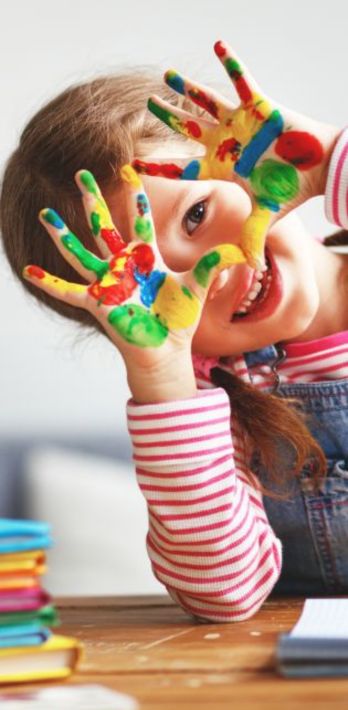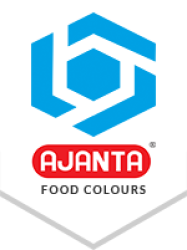Russia, or the Russian Federation, is the world’s largest country by land. The country is known for its beautiful views, natural rivers, diverse landscapes, and rich cultural heritage. Russia shares its border with 16 countries that span Eastern Europe and Northern Asia, such as Norway, Finland, Estonia, Latvia, Lithuania, Poland (via Kaliningrad Oblast), Belarus, Ukraine, Georgia, Azerbaijan, Kazakhstan, China, Mongolia, North Korea, Japan (maritime boundary), United States (maritime boundary across the Bering Strait).
In Russia, there are various manufacturing industries that heavily contribute to the country’s GDP. In the manufacturing of any product, there are various components that play a crucial role. Some components play a role in product manufacturing, while others improve its visual appeal, such as colours. They improve product sales by making the products appealing to customers, which attracts their attention. Russian colour manufacturers prepare colours, but they are not sufficient to fulfill all the colour-related demand of the country.
To fulfil this gap and make a profit, Russian colour suppliers, merchants, and distributors import colours from other countries like India, China, and the United States at low prices and sell them in Russia at high prices. Some sell the colours under the same brand name from they bought while others create their own labells and sell under their branding.
Russian Industries Where Colours Play a Vital Role
In Russia, there are several industries where colours play a vital role. They make the product appealing and attractive to consumers, which boosts sales. Here are some manufacturing industries in Russia where colours play a crucial role.
Food and Beverage Industry
In the food and beverages manufacturing industry of Russia, colour plays a crucial role. They make the product appealing to customers, which attracts their attention that boosts product sales, and brand recognition in the market. However, Russian food manufacturers often face some challenges in selecting the right colour for their products. They want high-quality colours that do not fade or change over time. Russian food manufacturers can overcome their challenges by using high-quality synthetic food colour in their products. Synthetic food colours maintain the quality of products during manufacturing and storage. The main production centers for the food and beverage industry in Russia are Moscow, Saint Petersburg, and Novosibirsk, where they serve domestic and international markets. According to Statista, the Russian food market amounts to US$275.97 billion in 2025, and it is expected to grow annually by 5.82% (CAGR 2025-2030).
Cosmetics Industry
Colour plays a crucial role in the field of the Russian cosmetics industry. They make cosmetic and personal care products such as lipstick, eyelashes, mascara, soups, and foundations appealing and fun for customers that attract their attention and boost product sales. However, the Russian cosmetic manufacturers often face some challenges in selecting the right colour for their cosmetic products. Manufacturers want premium quality colours that do not fade or change over time and maintain the appearance of cosmetic items. Synthetic cosmetic colours can overcome all the challenges of Russian cosmetic manufacturers. These high-quality cosmetic pigments come in various colour shades that allow manufacturers to create a unique and different coloured product that attracts the attention of customers and boosts the product sales and brand recognition in the market. Most of the cosmetics manufacturing industries of Russia are located near Moscow, Saint Petersburg, Novosibirsk, and Yekaterinburg. According to Statista, the cosmetics market in Russia amounts to US$3.18 billion in 2025, and it is projected that the market will grow annually by 3.38% (CAGR 2025-2030).
Pharmaceuticals Industry
Colour plays a crucial role in the pharmaceutical manufacturing industry in Russia. Colour makes medicines such as tablets, capsules, syrups, drops, and injectables, appealing to patients that making it easy to recognise them and reducing the chances of taking the wrong medicines. It also helps pharmaceutical companies to improve their brand recognition in the market. However, Russian pharmaceutical manufacturers often face some challenges in selecting the right colour for their products. They want high-quality colours that are stable and maintain the medicine's stability and consistency for a long time. Russian pharmaceutical manufacturers can achieve this by using high-quality synthetic food-grade colours in their products. These colours provide a bright and appealing look to medicines and do not fade or change over a long time of period. Most of the pharmaceutical manufacturing industries in Russia are located near its big cities like Moscow, Saint Petersburg, Novosibirsk, Yekaterinburg, and Nizhny Novgorod. According to Statusta, the revenue of the pharmaceutical market of Russia amounts to US$7.20 billion in 2025, and it is expected to grow at an annual rate of 4.42% from 2025 to 2029, resulting in a market volume of US$8.55 billion by 2029.
Chocolate Industry
In the Russian chocolate manufacturing industry, colour plays a crucial role. Colour makes the chocolates appealing to customers, especially for children and women who are the prime audience of chocolates. These appealing coloured chocolates attract the attention of customers and boost the product sales. However, the Russian chocolate manufacturers often face some challenges in selecting the right colour for their chocolate products. They want premium quality colours that do not fade or change and maintain the stability of chocolate in various conditions, such as heat, light, and different pH levels. Russian chocolate manufacturers can overcome their challenges by using premium-quality synthetic food colours in their products. These colours are of high quality and maintain the stability of chocolate during manufacturing and storage. Most of the Russian chocolate manufacturing industries are located in Moscow, Saint Petersburg, Novosibirsk, and Yekaterinburg. These cities have a high demand for chocolates and a large population of potential customers. According to Statista, the revenue of the chocolate confectionery market of Russia amounts to US$8.37 billion in 2025, and it is expected to grow annually by 6.83% (CAGR 2025-2030).
Animal Feed Industry
Colour also plays a crucial role in the pet food manufacturing industry. Colour makes the pet food appealing, which attracts the attention of pets and encourages them to eat properly and stay healthy. However, Russian pet food manufacturers still face some challenges in selecting the right colour for their products. They want high-quality colours for their pet food products that maintain the stability and visual appeal of the food. By using high-quality synthetic food colours in their products manufacturers can overcome all their challenges. Synthetic food colours come in various high-quality shades, allowing manufacturers to create a unique and different coloured product that improves brand recognition of the product in the market, ultimately boosting sales. In Russia, most of the animal feed manufacturing industries are located in the central regions of the country, like Moscow and the surrounding areas. This region has a significant concentration of agricultural activity that makes it a strategic location for feed production to support livestock farming across the country. According to Statista, the revenue of the Pet food market of Russia amounts to US$2.03 billion in 2025, and it is expected to grow annually by 2.35% (CAGR 2025-2030).
Cultural Preferences of Colours in the Russian Market
Meanings and associations of colours vary with cultures and regions. In the Russian Federation, colours play a very important role in expressing emotions, values, and traditions. Most manufacturers of consumable products—food and beverage, cosmetics, pharmaceuticals—can attract consumers to their products by using appealing colours. For example, red is used to indicate freshness and emphasize the quality and taste of food products. White colour is used for cleanliness and safety as well as elegance for cosmetics or pharmaceuticals, like toothpaste, cream, and pills. Blue creates trust, reliability, and professionalism for such product types as soap or shampoo. The knowledge of colour preference in Russia will allow international companies to productively design their products as well as their packaging, appealing to the Russian market, which boosts sales.
Regulatory Guidelines on Colours in the Russian Market
Colour, whether they are synthetic or natural food colour, must be approved by the regulatory body of the country. In Russia, the Federal Service for Surveillance of Consumer Rights Protection and Human Well-being (Rospotrebnadzor) is the governmental body of the country that checks the quality and safety of colours in food, cosmetics, and personal care items. The Federal Service for Surveillance in Healthcare (Roszdravnadzor) is another body of Russia that checks the quality of pharmaceutical products. Both agencies ensure the safety of colours used for human consumption by conducting regular inspections, testing, and enforcement actions from time to time.
Starting a new business in Russia is also a challenging task. Startups face various challenges, including competition with existing brands, differentiating their product from competitors, and winning customer trust. Startups can overcome their various challenges by using high-quality synthetic colours in their products. Synthetic food colours come in various shades that allow startups to create unique coloured products that improve brand recognition in the market and ultimately boost sales. Plus, synthetic food colours are an affordable option compared to other colourant alternatives that allow manufacturers to sell their products at competitive prices.
If you are a manufacturer or a startup business in Russia and are looking for high-quality synthetic food colours for your products, you can go with Ajanta Food Colours, a leading synthetic food colour manufacturer with over 75 years of legacy. The company operates advanced and eco-friendly manufacturing plants that help Ajanta to stand out at the top position of the synthetic food colours manufacturing industry.
For the quality and safety of its colourants, Ajanta received various awards and certificates from India and from other countries where the company exports its high-quality colours. Some of the awards and certificates received by Ajanta Food Colours includes the Arch of Europe Award, the Bureau of Indian Standards (BIS) Award, certifications from the Food Safety and Standards Authority of India (FSSAI), the US Food and Drug Administration (US FDA), as well as Halal, Alcumus ISOQAR, Star-K Kosher, Food Safety System 22000 (FSSC 22000), and ISOQAR certifications, among others.
To know more about Ajanta Food Colours and its high-quality colours or for any other information please contact us today!





